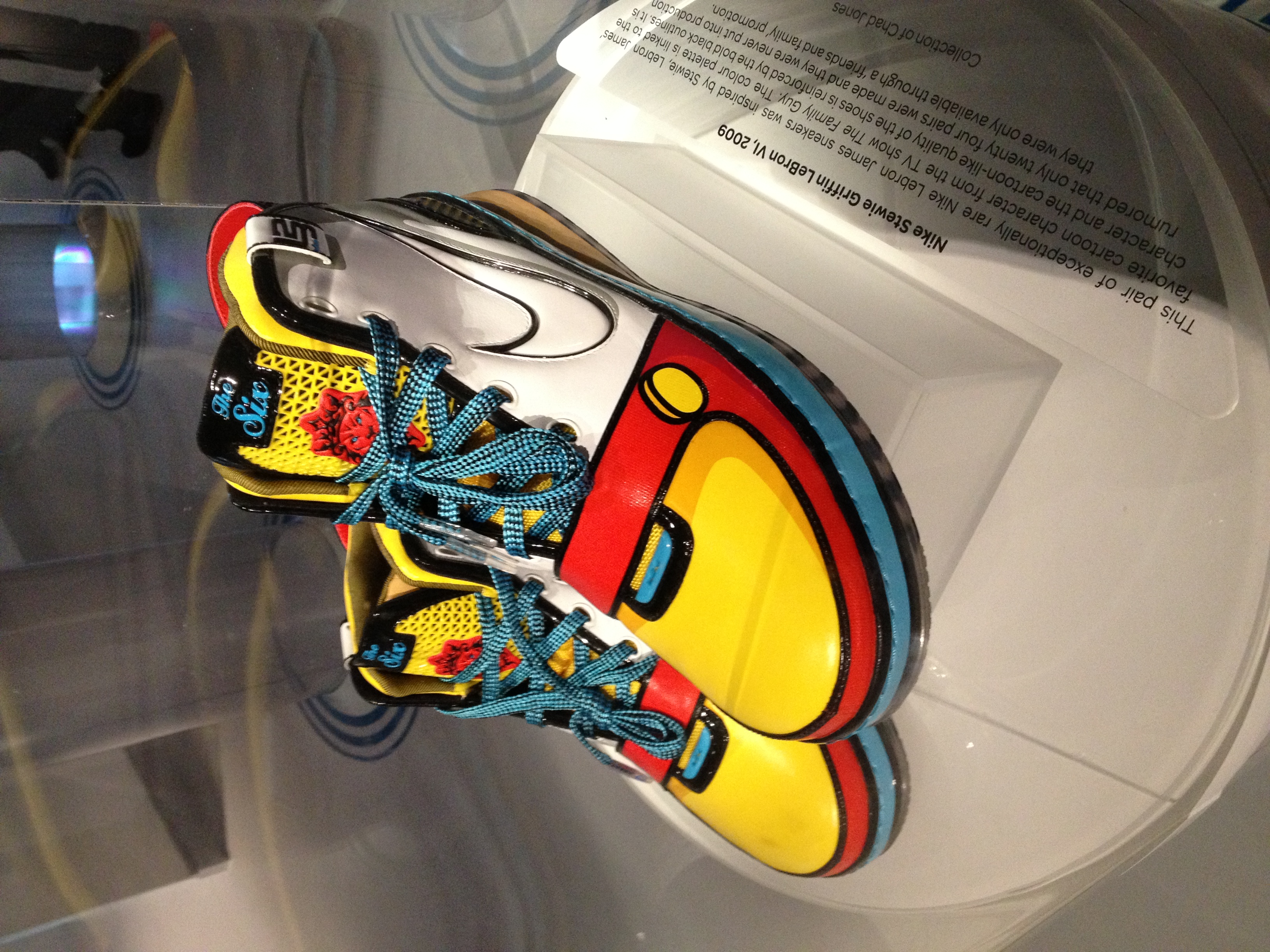
Otis Davis, an American sprinter who rose from the segregated South to capture two gold medals at the 1960 Summer Olympics in Rome, passed away on September 14, 2024, at the age of 92. His remarkable life story is one of perseverance, athletic brilliance, and a quiet determination to overcome the systemic prejudices of his era. Davis not only etched his name into Olympic history with record-breaking performances but also left an indelible mark through his unwavering commitment to community and mentorship long after his competitive career concluded.
His journey to becoming an Olympic champion was anything but conventional, characterized by an unexpected foray into track and field later in life and a profound sense of purpose that resonated deeply with his experiences as a Black man growing up in Jim Crow Alabama. Davis’s achievements on the global stage were more than just athletic feats; they were powerful statements against the racial injustices he faced, providing him with a psychological escape from what he described as “all of that negative stuff.”
This article delves into the formative experiences and pivotal moments that shaped Otis Davis’s extraordinary life, from his challenging beginnings and military service to his serendipitous discovery of track under the legendary coach Bill Bowerman, culminating in his individual triumph at the Rome Games. We explore the circumstances that led him to shatter world records and break the heralded 45-second barrier in the 400 meters, a testament to his innate talent and relentless spirit.

1. **A Formative Childhood in Segregated Alabama**Otis Crandall Davis was born on July 12, 1932, in Tuscaloosa, Alabama, a place profoundly shaped by the rigid norms of segregation. He was raised primarily by his maternal grandmother, Carrie Eaton, though he occasionally lived with his mother, Mary Alice Davis, who worked as a science teacher and movie theater cashier, and his father, Johnie Davis, a bellhop. His upbringing in this deeply divided society laid the foundation for a life marked by a quiet yet powerful defiance against racial injustice.
During his childhood, Tuscaloosa enforced strict segregation, mandating separate facilities and institutions for Black and white residents. Davis attended an all-Black school situated more than a mile from his home, even though an all-white high school stood just about a block away. This stark reality of racial discrimination was a constant backdrop to his early years, shaping his understanding of the world and his place within it.
The profound impact of segregation was not just institutional but also deeply personal. Davis once recounted witnessing Ku Klux Klansmen march through Tuscaloosa, a memory that left him with a lasting impression of sadness, particularly noting that some of the marchers were children. These early encounters with overt racism undoubtedly fueled a deep-seated desire to transcend the limitations imposed by a society that sought to diminish his potential. He would later reflect on his athletic pursuits as a way of “running away from all of that negative stuff.”
Davis often articulated that he was “working against all of that bitterness and the hatred and the second-class citizenship” he encountered. His experiences in a system that claimed individuals “weren’t as good as they were because they didn’t even know you, because you might look different from them, which is totally absurd,” underscored a lifelong drive for self-validation and excellence that would ultimately propel him to global renown.

2. **Korean War Service and Collegiate Beginnings**Before embarking on his celebrated athletic career, Otis Davis dedicated four years of his young adult life to serving in the United States Air Force during the Korean War. This period of military service in England and the United States not only instilled discipline but also provided a crucial transition away from the direct oppression of the Jim Crow South, broadening his perspective and preparing him for subsequent academic and athletic pursuits.
Following his honorable discharge from the Air Force, Davis enrolled at Los Angeles City College. His initial athletic focus was basketball, a sport he had some experience with during his youth. This period in California marked his re-entry into civilian life and formal education, offering him new opportunities for personal and athletic growth away from the segregated environment of his upbringing.
In 1957, Davis’s collegiate journey led him to transfer to the University of Oregon, securing his place through a basketball scholarship. While basketball brought him to Oregon, his path was soon to diverge in an unforeseen direction, setting the stage for a dramatic and historic shift toward a sport he had never seriously considered before. This pivotal move to Oregon would ultimately connect him with figures and opportunities that would redefine his life’s trajectory.
Read more about: Otis Davis, Olympic Gold Medalist Who Broke Records and Barriers, Dies at 92

3. **The Unexpected Shift to Track at Oregon**Otis Davis’s legendary track and field career began with an almost accidental discovery, a testament to his innate athletic curiosity and competitive spirit. One day in 1958, while observing athletes training on the track from his dorm window at the University of Oregon, Davis, who had never run competitively nor attended schools with formal track programs, felt a sudden conviction. He believed he could surpass the runners he was watching, a bold thought for someone entirely new to the sport.
Driven by this spontaneous insight, Davis approached the renowned track coach Bill Bowerman, a man whose name would later become synonymous with athletic innovation as a co-founder of Nike, Inc. Davis simply asked to join the track team, a request that reflected his direct and confident nature. This seemingly casual inquiry marked the beginning of a profound partnership that would culminate in Olympic glory, despite Davis’s complete lack of formal sprinting experience.
His self-assessment of his athletic background was candid: he had “never run before.” The schools he attended in his youth offered sports programs primarily limited to basketball and football, leaving track and field entirely unexplored. This late introduction to the sport underscores the extraordinary nature of his talent and the rapid pace at which he adapted and excelled under expert guidance, demonstrating a remarkable capacity for learning and immediate application.
Read more about: Why the Trail Went Cold: Tracing the Retreat of Country Firebrand Gretchen Wilson from the Limelight
4. **Under the Tutelage of Bill Bowerman**Upon Otis Davis’s approach, Coach Bill Bowerman, ever resourceful, initially needed high jumpers rather than sprinters. He had Davis try his hand at high jump, a challenge Davis embraced with raw athleticism. Despite his inexperience, Davis quickly showed promise, recalling, “I had no form. I had no style. I just jumped,” yet cleared an impressive six feet on one of his first attempts.
Davis’s natural athletic ability extended beyond the high jump. He also effortlessly hit twenty-three feet in the long jump, further demonstrating a versatility that hinted at untapped potential. However, the intricacies of sprinting initially flustered him, as he candidly admitted, “I didn’t even know how to get in the starting blocks.” This admission highlights the steep learning curve he faced, a testament to his dedication and Bowerman’s keen eye for talent.
For his inaugural competitive event, Bowerman strategically entered Davis in both the 220-yard dash and the 440-yard dash at the Pacific Coast Conference championships. Remarkably, Davis won both races, narrowly missing the school record in the latter by just two-tenths of a second. This early success underscored Bowerman’s insightful assessment of Davis’s potential.
Bowerman recognized early on the unique combination of attributes Davis possessed. In 1959, he told The Oregonian, “Otis never had run the 440 until this year, but he has the strength, the speed and the determination necessary.” This prescient observation would prove profoundly accurate as Davis honed his skills, transforming from a novice into a world-class sprinter in a remarkably short period.

5. **The Fabled Origins of Nike Shoes**Among the many intriguing facets of Otis Davis’s time at the University of Oregon, one story stands out for its connection to a global phenomenon: his claim to have worn the very first pair of shoes made by Bill Bowerman, predating the narrative often associated with Phil Knight. Davis recounted this significant detail, stating, “I told Tom Brokaw that I was the first. I don’t care what all the billionaires say. Bill Bowerman made the first pair of shoes for me.”
Davis’s vivid recollection provides a unique perspective on the rudimentary beginnings of what would become Nike, Inc. He clearly remembered witnessing Bowerman craft the innovative footwear: “I saw Bowerman make them from the waffle iron, and they were mine.” This direct observation from the athlete himself offers a compelling counter-narrative, adding a personal touch to the origins of one of the world’s most recognizable brands.
Despite the historical significance of being the alleged recipient of Bowerman’s pioneering design, Davis’s initial experience with the prototype was far from perfect. He candidly expressed his dissatisfaction with the experimental footwear, noting, “In fact, I didn’t like the way they felt on my feet. There was no support and they were too tight.” This detail, while humorous, underscores the experimental nature of Bowerman’s early innovations and the iterative process that underpins athletic performance technology.

6. **Qualifying for Rome: An Older Rookie’s Journey**By 1960, Otis Davis was competing on a national level for the Oregon Ducks, demonstrating significant prowess in the 440-yard run and poised to become a national AAU champion. His rapid development in the sport was remarkable, particularly considering his late start and the intense competition at the collegiate level. This period solidified his status as a serious contender on the national stage.
At the age of 28, a relatively advanced age for an Olympic debut in track and field, Davis successfully made the 1960 United States Olympic team. He secured his spot by placing third in the 400-meter race at the Olympic Trials, showcasing his ability to perform under pressure. His age earned him the nickname “Pops” among his younger teammates, a lighthearted acknowledgment of his unique journey to the Olympic stage.
Despite his burgeoning success, Davis remained a student of the sport, continuously refining his technique and strategy. He candidly recalled his mindset just before the Rome Games: “I was still learning how to turn with the staggered starts and all. I was still learning the strategy involved. I was still learning how to run in the lanes.” This humility and dedication to improvement, even at the precipice of Olympic competition, underscored his profound commitment to mastering his craft.
Davis ran his fastest time to date just one week prior to the 1960 Summer Olympics in Rome. This timing indicated that he was peaking at the perfect moment, entering the Games as one of the oldest, yet increasingly formidable, members of the U.S. track team. His journey to Rome was a testament to his perseverance, the guidance of Bowerman, and his own raw, untamed talent finally coming into full bloom.

7. **The Historic 400m Gold and the 45-Second Barrier**On September 6, 1960, at the Summer Olympics in Rome, Otis Davis faced his ultimate challenge: the 400-meter final against the heavily favored German athlete Carl Kaufmann. Kaufmann, a Brooklyn-born runner competing for Germany, held the world record in the event, setting the stage for a dramatic showdown. The race itself became one of the most memorable in Olympic history, a testament to sheer willpower and speed.
Davis, as described by David Maraniss in “Rome 1960: The Olympics That Changed the World,” initially got off to a slow start. However, halfway through the race, he unleashed a sudden burst of acceleration, surging into the lead. His lead stretched to an impressive seven yards, but in the final 100 meters, Kaufmann, known for his powerful finish, began to close the gap rapidly, turning the final strides into a breathtaking sprint to the line.
The iconic photo finish became a subject of intense discussion among track and field officials for years. Davis ran upright, a style he dubbed “swayback,” with his hands in front of him. Kaufmann, in contrast, leaned far forward, appearing to dive across the finish line with his head low and hands winging behind him. Both athletes were credited with a world-record time of 44.9 seconds, a mark recorded in tenths of a second in those days. However, upon further examination, Davis’s auto-time was 45.07 to Kaufmann’s 45.08, definitively awarding Davis the victory.
This momentous win not only secured Davis his first Olympic gold medal but also made him the first man in history to break the heralded 45-second barrier in the 400 meters. The achievement was so extraordinary that even Davis himself expressed disbelief, telling The Register-Guard in 2015, “They didn’t think any human could go that fast, and I didn’t either.” His victory shattered previous expectations of human speed and redefined what was thought possible in sprint events.
Davis’s own reflections on the race underscored his ongoing development as a runner, even at the peak of competition. “If you can imagine, I was still learning how to run in different lanes,” he stated. This remarkable humility from a newly crowned world record holder highlights the rapid trajectory of his athletic career and the extraordinary natural talent that allowed him to achieve such greatness while still mastering the nuances of his sport. His individual triumph in Rome solidified his place as a pioneer in track and field history.
Read more about: Otis Davis, Olympic Gold Medalist Who Broke Records and Barriers, Dies at 92

8. **The Triumphant 4x400m Relay Gold**Two days after his individual triumph in the 400 meters, Otis Davis once again stepped onto the Olympic track in Rome, this time as the anchor for the United States’ 4x400m relay team. He joined forces with a formidable lineup: Jack Yerman, Earl Young, and Glenn Davis, the gold medalist in the 400-meter hurdles. The stage was set for another display of American sprinting prowess, and once more, it would be a dramatic encounter.
The race unfolded with intensity, as Jack Yerman established an early lead against Germany, which was then slightly extended by Earl Young. Glenn Davis then took the baton, maintaining a crucial three-yard advantage. When it came time for Otis Davis to receive the final pass, he was handed a four-yard lead, with Carl Kaufmann, his formidable German rival from the individual 400m final, once again poised to challenge him.
Davis, exhibiting strategic brilliance, did not simply sprint away. He recounted his approach to Track & Field News, stating, “I accelerated a little to make Kaufmann use his strength to catch me, then I floated. When he came up again, I’d accelerate, then float again. I figured he’d use up his power trying to catch me each time, then I’d turn on the kick and walk away.” This calculated tactic proved devastatingly effective, neutralizing Kaufmann’s renowned finishing power.
The American quartet crossed the finish line in a world-record time of 3 minutes 2.2 seconds, securing Otis Davis his second Olympic gold medal. This victory not only affirmed his exceptional speed and tactical acumen but also solidified the United States’ dominance in sprint relays. The iconic photo of the finish of this race, much like his individual 400m victory, achieved widespread fame, appearing prominently in Life magazine, immortalizing a moment of collective athletic achievement.

9. **Transition from Track: Post-Olympic Career**Following his dual gold medal triumphs in Rome, Otis Davis’s competitive running career, despite its recent zenith, gradually receded. He participated in some sporadic track meets, notably defending his 400-meter title at the 1961 U.S. Nationals on Randall’s Island at the age of 29, demonstrating his continued, albeit brief, elite form. However, his Olympic performances were never truly repeated, signaling a natural shift in his athletic journey.
After concluding his competitive chapter, Davis returned to Oregon, a place that had become pivotal in his development as an athlete. He even considered a potential foray into professional football, contemplating a role as a wide receiver for the Los Angeles Rams, a testament to his versatile athleticism. Ultimately, he chose a different path, one focused on education and community service.
His post-competitive life began with a dedication to teaching, as he worked for many years as a high school teacher in Springfield, Oregon. This transition allowed him to channel his discipline and experience into mentoring younger generations. His commitment to education and sports extended beyond the classroom, leading him to work overseas as an athletic director at various United States military bases, including McGuire Air Force Base in New Jersey, where he taught in 1989. This period marked the beginning of his lifelong commitment to fostering athletic development and personal growth in others.
10. **A New Calling in New Jersey: Educator and Mentor**In 1991, Otis Davis made a significant move to Jersey City, New Jersey, seeking to be closer to New York, and eventually settled in Union City. This relocation marked a new, profound chapter in his professional life, one deeply rooted in community service and mentorship. Around 2002 or 2003, the Union City Board of Education recognized his unique potential, hiring him to work at Emerson High School.
At Emerson High, Davis embraced multiple roles, serving as a truancy officer, teacher, coach, and mentor. His presence in the school environment allowed him to directly influence and guide young students, providing them with not only academic and athletic support but also a living example of perseverance and achievement. His calm demeanor and rich life experiences made him a respected figure among the students and staff.
Initially, many of his colleagues and students at Emerson High were unaware of the legendary status of the quiet man in their midst. However, when Davis was inducted into the National Track and Field Hall of Fame in 2003, he invited Emerson Principal Robert Fazio to accompany him to the ceremony in Los Angeles. Upon learning of his extraordinary Olympic past, the school staff collectively honored him, proudly displaying a banner in a hallway that celebrated his remarkable achievements, transforming him into a celebrated icon within the school community.
By 2012, Davis was still actively engaged at Union City High School, continuing his invaluable work as a verification officer and mentor. His daily interactions provided guidance and inspiration, as he dedicated himself to shaping the lives of young people. His journey from Olympic champion to a steadfast presence in the educational system underscored his belief in the transformative power of sport and mentorship, leaving an enduring positive impact on countless students.
Read more about: Otis Davis, Olympic Gold Medalist Who Broke Records and Barriers, Dies at 92

11. **Community Engagement: Inspiring Youth through Sports**Beyond his formal roles within the school system, Otis Davis remained a tireless advocate for youth development and community well-being through athletic programs. His commitment extended to establishing and leading initiatives designed to engage young people in sports, particularly those who might not typically participate in organized events. He believed deeply in the power of physical activity to build character and foster inclusion.
As a co-founder and, by 2012, president of the Tri-States Olympic Alumni Association, Davis leveraged his stature to promote Olympic values and athletic participation. This organization provided a platform for former Olympians to continue contributing to their communities, with Davis at the forefront of these efforts, connecting with a new generation of aspiring athletes and citizens.
He actively ran athletic skills programs during the spring and summer months in Union City, specifically targeting students who did not traditionally engage in sporting events. These initiatives were carefully designed to complement the schools’ existing physical education curricula, ensuring that a broader spectrum of students had access to sports. His programs aimed to spark an interest in athletics, promoting health, teamwork, and self-discovery.
Among the notable programs he directed was the Mayor’s Cup, first held on June 6, 2011, which brought together students from various elementary schools across the city. Participants competed in a range of events, including sprinting, spring relays, and circle relays, fostering a spirit of friendly competition and camaraderie. Furthermore, Davis championed the Sports Challenge, a vital program specifically tailored to provide special needs children with the invaluable opportunity to participate in sports activities, highlighting his dedication to inclusivity and equitable access to athletic experiences.
Read more about: Unlocking the Secrets of ‘SuperAgers’: How Some Octogenarians Maintain Youthful Brains and Defy Cognitive Decline

12. **Enduring Recognition: Hall of Fames and Honors**Otis Davis’s extraordinary contributions to athletics and his community garnered significant recognition throughout his life, cementing his legacy as a true icon. In 1996, his enduring Olympic spirit was celebrated when he was chosen as a torch-bearer for the Summer Olympics in Atlanta, a symbolic passing of the flame that honored his past achievements and continued inspiration. This moment connected his historical victories with contemporary athletic spectacle.
A significant milestone in his recognition came in 2003 when he was inducted into the National Track and Field Hall of Fame, an honor reserved for the sport’s most distinguished figures. This induction formally acknowledged his groundbreaking performances and his pioneering role in breaking the 45-second barrier in the 400 meters, placing him among the pantheon of American track and field legends.
His alma mater, the University of Oregon, also paid tribute to his unparalleled legacy. Davis was inducted into the University of Oregon Hall of Fame and later received the prestigious Distinguished Alumni Award from the university in 2015. These accolades celebrated not only his athletic prowess but also his lifelong dedication to education and community service, reflecting the multifaceted impact he had since graduating with a B.S. in Health & Physical Education in 1960.
Perhaps one of the most visible and enduring tributes to Otis Davis stands adjacent to Hayward Field, the renowned track and field venue at the University of Oregon. He is one of only five track and field legends depicted on a striking nine-foot tower, alongside legendary coach Bill Bowerman and fellow athletes Ashton Eaton, Steve Prefontaine, and Raevyn Rogers. This prominent monument serves as a constant reminder of his status as Oregon’s first Olympic track and field gold medalist and his indelible mark on the institution’s athletic history.
13. **The Recovery of Stolen Medals**In a distressing incident in March 1994, Otis Davis experienced a personal loss that highlighted his connection to his community. Burglars broke into his apartment in the Heights neighborhood of Jersey City and stole his cherished gold medals, symbols of his Olympic triumphs. This act of theft was not merely a loss of precious metal but a profound violation of his historical achievements and personal memories.
The news of the theft resonated deeply with his neighbors and the broader community, who swiftly rallied in support of the beloved Olympian. Their collective concern manifested in a powerful display of solidarity: a banner was prominently raised on the porch of a nearby house, emblazoned with the heartfelt message, “Bring Home Otis Davis’ Gold.” This public outpouring demonstrated the profound respect and admiration the community held for Davis, transforming a personal setback into a shared cause.
The community’s efforts, coupled with diligent police work, yielded a swift and fortunate outcome. Within approximately a month, the stolen medals were recovered and safely returned to Davis, bringing immense relief and joy. The efficiency of the recovery underscored the commitment of law enforcement and the impactful visibility of community advocacy.
Reflecting on the return of his medals, Davis expressed his profound gratitude and wonder, telling The Jersey Journal, “Things happened so fast, it was like magic.” The timing, occurring around Good Friday, further deepened the significance for him, as he remarked, “Now I can have a Happy Easter.” This incident, though initially disheartening, ultimately served as a testament to the strong bonds he had forged with his community and the enduring symbolic power of his Olympic legacy.
Read more about: Beyond Boot Camp: 14 Essential Military Hacks That Could Be Your Lifeline in a Crisis
14. **Sharing His Story: The Memoir “Destiny’s Daredevil”**In 2023, late in his life, Otis Davis embarked on a new endeavor to share the profound narrative of his journey, publishing his memoir titled “Destiny’s Daredevil: The Autobiography of an Olympic Champion Helping Others Cross the Finish Line.” This publication provided an invaluable opportunity for him to convey his life’s experiences, challenges, and triumphs in his own words, offering insights into the extraordinary path he navigated.
The memoir encapsulates the essence of Davis’s remarkable life, from his upbringing in segregated Alabama to his unexpected entry into track and field, his Olympic glory, and his extensive post-competitive career dedicated to service. It serves not only as a chronological account of his achievements but also as a reflection on the broader societal context in which he lived and competed, particularly the racial prejudices he transcended.
Through “Destiny’s Daredevil,” Davis aimed to inspire and guide others, much as he had done in his roles as a teacher, coach, and mentor. The subtitle, “Helping Others Cross the Finish Line,” powerfully conveys his lifelong commitment to uplifting individuals and communities. It underscores his belief that his experiences, both on and off the track, could provide valuable lessons in perseverance, resilience, and the pursuit of one’s potential, irrespective of obstacles.
The memoir stands as a final, comprehensive testament to his enduring spirit and his dedication to leaving a positive mark on the world. It chronicles a life of unyielding determination and quiet strength, from shattering world records to championing youth sports programs. His written legacy ensures that his story will continue to resonate, offering inspiration for generations to come, well beyond his passing.
Otis Davis’s passing at 92 marked the end of an era, but his profound legacy continues to inspire. From breaking barriers on the track to dedicating decades to educating and mentoring youth, his life was a testament to extraordinary resilience, unwavering determination, and a deep-seated commitment to justice and community. He ran not only for gold but to outrun the shadows of prejudice, leaving behind a world enriched by his speed, his humility, and his boundless spirit. His story, enshrined in records, monuments, and the hearts of those he touched, reminds us that true greatness extends far beyond the finish line, echoing in every life he helped guide toward their own victories.







